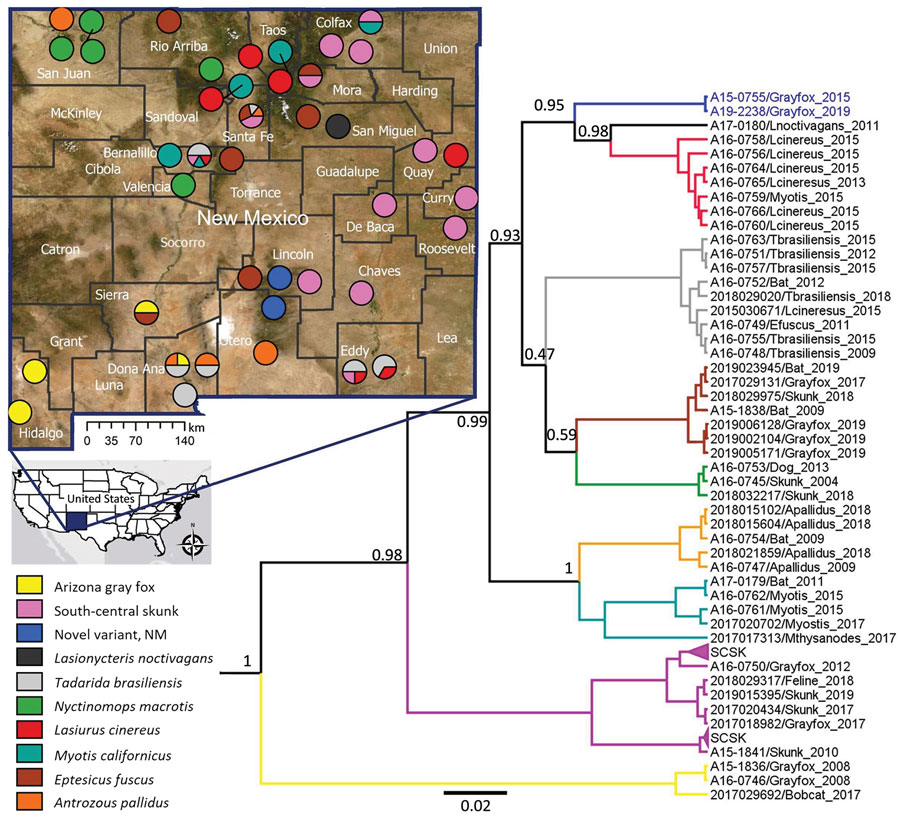Divergent Rabies Virus Variant of Probable Bat Origin in 2 Gray Foxes, New Mexico, USA
Rene E. Condori, Adam Aragon, Mike Breckenridge, Kendra Pesko, Kerry Mower, Paul Ettestad, Sandra Melman, Andres Velasco-Villa, Lillian A. Orciari, Pamela Yager, Daniel G. Streicker, Crystal M. Gigante, Clint Morgan, Ryan Wallace

, and Yu Li
Author affiliations: Centers for Disease Control and Prevention, Atlanta, Georgia, USA (R.E. Condori, A. Velasco-Villa, L.A. Orciari, P. Yager, C.M. Gigante, C. Morgan, R. Wallace, Y. Li); New Mexico Department of Health, Albuquerque, New Mexico, USA (A. Aragon, M. Breckenridge, K. Pesko, P. Ettestad, S. Melman); New Mexico Department of Game and Fish, Santa Fe, New Mexico, USA (K. Mower); University of Glasgow, Glasgow, Scotland, UK (D.G. Stricker)
Main Article
Figure 1

Figure 1. Phylogenetic tree based on partial nucleoprotein gene (348 bp) sequences and geographic distribution of rabies virus (RABV) variants, New Mexico, USA. The tree was constructed by using representative isolates and only posterior values leading to the RABV variants are included on the tree nodes. Three major clades were identified in New Mexico. The RABV variants are displayed in distinct colors in the tree and map according to the legend included in the figure. Blue indicates novel RABV isolates collected from gray fox in Lincoln County. Accuracy of the location in the map is at city level; for samples that did not have city information, the location was randomly assigned within the county. Numbers along branches are bootstrap values. Scale bar indicates nucleotide substitutions per site.
Main Article
Page created: March 12, 2022
Page updated: May 22, 2022
Page reviewed: May 22, 2022
The conclusions, findings, and opinions expressed by authors contributing to this journal do not necessarily reflect the official position of the U.S. Department of Health and Human Services, the Public Health Service, the Centers for Disease Control and Prevention, or the authors' affiliated institutions. Use of trade names is for identification only and does not imply endorsement by any of the groups named above.
